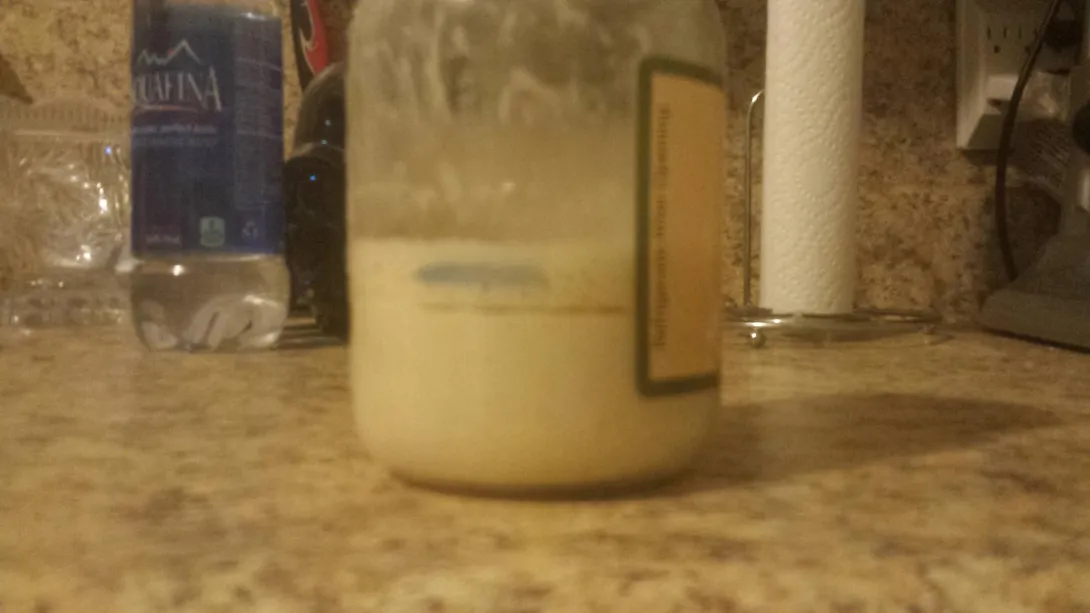
Hi guys, a while back I asked about my rye starter and patience was rewarded with a nice healthy culture that has produced a nice rye loaf. Once it was well established for a few days, when I fed it I took the part to be discarded and made a starter with unbleached all purpose. It seemed OK for a while but it was too wet so it didn't rise much. I've cut back on the hydration in hopes of helping. The problem I've had all along is what seems to be a layer of liquid with more starter on top. I assumed it was maybe a little hooch but I wasn't sure. It just seems odd it would be under a layer of starter. I've included a picture so you guys can see what I'm talking about. Excuse the horrible picture,quality and the messy counter lol.
If you guys have any ideas, I'm open to any. Thanks so much!
Now that I can see the picture here, I'll explain. The blue line is where it started at last feeding. The bottom part has no bubbles but the top little bit does. But there's that odd layer of what appears to be liquid. Maybe it's just separation but it's there every day. I'm at a loss. It smells good. I stir it very well when I feed it and it's kept right beside my rye starter thats,doing very well.
Give it a stir a few times a day and see if that helps.
are prone to making hooch. I would thicken it up to 80% hydration by adding some flour and see what happens.
out for at least 24 hours before using to feed the starter and see if there is an improvement.
The active layer on top is getting more air. Could be that purification chemicals in the water are suppressing growth in the lower areas of the starter. Many dissipate on the surface so there is a healthier growth where air meets starter culture. That's my theory anyway.
A photo that shows the bubbles in focus would be a great help, esp. interested in the bubbles on the side of the glass.
Thanks you guys. I'll thicken it up and I'll try to get a better picture. My phone doesn't do great up close but I'll try :)
transfer to a laptop, zoom in and re-frame to post.
or possibly park a full glass of water in front of it to magnify?
This,is the best picture I could get this morning. Hopefully it's clear enough!
My laptop is broken so all I have is my phone for the time being. I can try to crop it and zoom in though
I'm not sure,if that will help. Maybe a link to the original image would be better?
Or maybe stir it all up, remove a small amount to build a levain and see how active the levain becomes?
Well I got rid of most of it last night and fed it at 50% hydration and even overnight in the 50s this is,what I woke up to. The blue line is the same one from yesterday and the red one is where it started,last night :)
It looks like it rose higher and has flattened out and fallen down to the blue mark. If so it needs to be fed again. It looks thin for a 50% hydration (example: fed with 20g water to 40g flour) (50% AP flour is white roll bread dough)
If still on the rise, let it peak out and fall back a little before feeding.
If using for a recipe, use while it is peaked.
If this starter amount is not enough for a basic recipe, feed it without discarding and then when peaked, use most of it.
The jar you keep it in should not be air tight. The starter does build up pressure and the glass can break. Lay a strip of paper across the opening before screwing down the lid or poke a nail hole in the lid. Or forget the screw on lid and cover with plastic, foil or wax paper and a rubber band just tight enough to keep it in place. It also works to invert a small custard type bowl over the top.